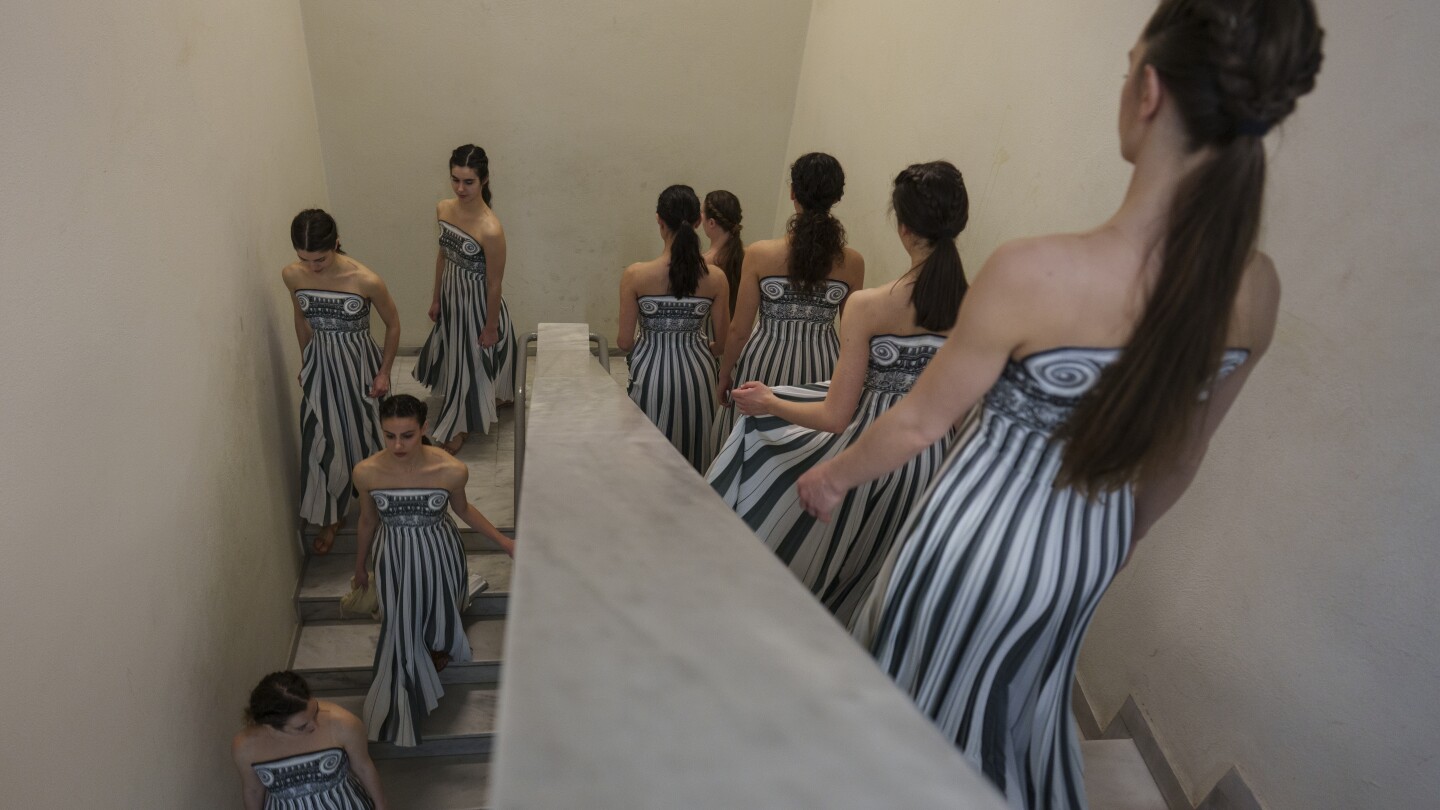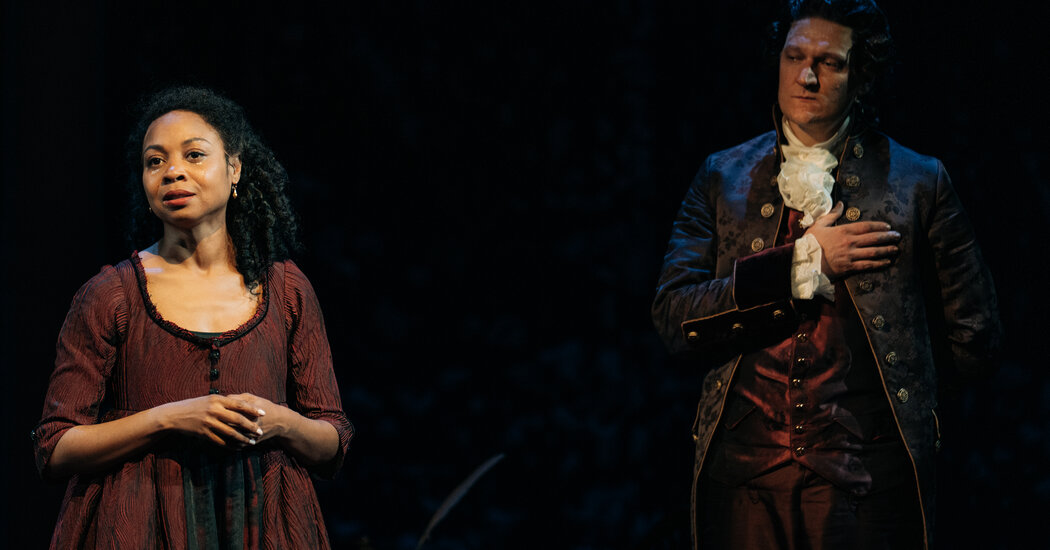Ron Simons, Who Brought Black Stories to Broadway, Dies at 63
[ad_1]
Ron Simons, who left his job as an executive at Microsoft to pursue his dream of acting but later found his métier as a theatrical producer — one of the relatively few Black ones on Broadway — and won four Tony Awards, died on June 12. He was 63.
His death was announced by Simonsays Entertainment, his production company. A spokesman declined to say where he died or provide the cause of death.
Mr. Simons had been acting for about a decade, but was unhappy with the roles he was being offered, when he started producing in 2009. He believed that his experience as an actor and businessman would serve him well as a producer.
“I’ve found that many businesspeople can handle the question of financial viability but can’t judge a good story, so as an artist I also have that area of expertise,” he told DC Theater Arts in 2020. “Plus, even if it’s a good story, it has to be crafted to take it to the stage, so the leadership must understand how to get it there.”
“He was an actor who’d gone to business school, and there was a sense of humanity about him,” Cheryl Wiesenfeld, a producer of both shows, said in a phone interview. She added that Mr. Simons brought a critical asset to producing — money — but also “a zest, curiosity, intelligence and knowledge.”
In 2014, he won his third Tony, for best musical, for “A Gentleman’s Guide to Love & Murder,” and three years later, he received his fourth, for best revival of a play, for “Jitney,” by August Wilson, about a storefront taxi company in a Black neighborhood in Pittsburgh.
“Jitney” underscored Mr. Simons’s mission to produce projects about underrepresented people and communities. It is one of 10 plays in Mr. Wilson’s American Century Cycle about the African American experience in the 20th century.
“In these political times, it is so, so important to share works of diverse voices,” Mr. Simons said in an interview with WAMC-FM in Albany, N.Y., in 2017. He added, “I think it’s really, really, really, really key that we uphold and promote and give voice to these diverse voices who are under siege right now and those who might not be directly under siege but who are ignored by mainstream entertainment and arts organizations.”
He also received Tony nominations for best musical as part of the team of producers of “Ain’t Too Proud: The Life and Times of the Temptations,” in 2019, and for best revival, in 2022, of “For Colored Girls Who Have Considered Suicide/When the Rainbow is Enuf,” a series of monologues by Ntozake Shange about the experiences of Black women set to dance and song. He was a lead producer of the play with Nelle Nugent.
Mr. Simons understood that staging works about — and by — people of color is not easy, partly because there were few producers like him and because of the perception that stories about Black people are not commercial enough for Broadway.
“George Floyd didn’t have a voice, so we can be his voice and tell his story,” he told DC Theater Arts. “Storytelling grabs you by the heart, and through it we can engage, educate and maybe even change. That’s my dream. Also that more white producers and theater owners will produce and present more stories of color.”
Ronald Keith Simons was born on Nov. 30, 1960, in Detroit. He became interested in acting in high school and he joked in a TedxBroadway Talk in 2018 that his “star turn” was a small role as a sharecropper in a high school production of the musical “Finian’s Rainbow.”
He majored in English and information systems at Columbia College, from which he received a bachelor’s degree in 1982, and went to work as a software engineer at Hewlett-Packard. But it was not an easy decision. He wanted to act — he had applied to the Yale School of Drama (now the David Geffen School of Drama at Yale University) — but knew that the profession was risky and that his mother and grandparents needed his financial help.
“I thought: ‘OK, one day. Not today,’” he recalled in an interview with the Microsoft Alumni Network, which noted that he left the company with a lot of stock options. “‘Maybe not tomorrow. Maybe not even next year, but you will become an actor. You will become an artist and move into the entertainment space.’”
After three years at Hewlett-Packard, he was hired as an applications project manager by IntelliCorp, where he worked from 1985 to 1988, then moved to Microsoft in 1989 as a product manager, which he held through 1992. He also earned a master of business administration degree from Columbia Business School in 1989 and a master of fine arts from the University of Washington in 2001.
After leaving Microsoft, he acted around the country with the Classical Theater of Harlem, Seattle Repertory Theater, the Utah Shakespeare Festival and the Cincinnati Playhouse in the Park. He performed occasionally on television in programs like the “Law & Order” franchise and in films like “The Assassin” (2007) and “27 Dresses” (2008).
His first project as a producer was “Night Catches Us,” a 2010 film starring Anthony Mackie and Kerry Washington about a former Black Panther who returns home to Philadelphia for his father’s funeral.
“I was really taken by the script because I had never seen a movie where the characters were two former Black Panthers,” he said in a 2015 interview with University of Washington Magazine.
He was initially an associate producer. But when the film’s lead financier dropped out, “I got a bunch of books on producing and I read them,” he said. He also played a role in the film, which premiered at the Sundance Film Festival.
From then on, Mr. Simons balanced producing films and stage works. He was an executive producer of films including “Gun Hill Road” (2011), about an ex-con who, after leaving prison, learns that his wife is estranged from him and that his son is undergoing a gender transition; “Blue Caprice” (2013), based on the terror unleashed by the Beltway sniper in the Washington area in 2002, and “Mother of George” (2013), about the culture clash of a Nigerian couple living in Brooklyn.
Mr. Simons’ other Broadway credits include a multiracial revival of Tennessee Williams’s “A Streetcar Named Desire” (2012), starring Blair Underwood and Nicole Ari Parker; “The Gin Game” (2015), with Cicely Tyson and James Earl Jones as residents of a retirement home, and “Thoughts of a Colored Man” (2021), the playwright Keenan Scott II’s mosaic of speeches, poems and songs for seven performers of color.
Complete information about Mr. Simons’s survivors was not immediately available.
In 2016, Mr. Simons was a lead producer of “Turn Me Loose,” an Off Broadway play about Dick Gregory (played by Joe Morton), the groundbreaking Black comedian and civil rights activist.
Eric Falkenstein, one of the play’s three other lead producers, recalled Mr. Simons taking the stage after the opening night performance at the Westside Theater and saying that he was going to hand something to each of his white partners.
“Ron was truly a showman who had great presence,” Mr. Falkenstein said by phone. “He said: ‘This is your official Black card. You’re now a full member of the club.’”
[ad_2]
Source link










